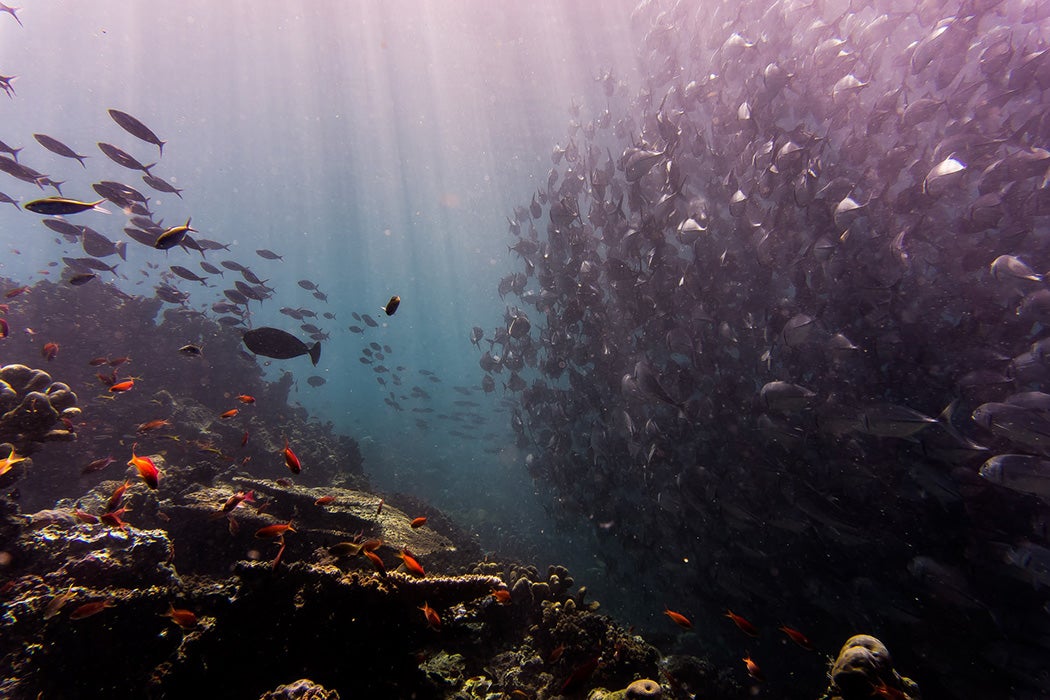Editor’s note: With deep sadness, I introduce this post as one of James MacDonald’s last for JSTOR Daily. James passed away unexpectedly before this post was published. As you can see from his author page, his contribution to JSTOR Daily has been enormous. He’s written about a huge variety of scientific topics, from crown shyness in trees to how the pyramids were built. We will be honoring him in various ways in our community, but we wanted to take a moment to let readers know and send our condolences to his family. James will be sorely missed. — Catherine Halley, Editor
Beyond the steady overall warming of the global climate we’ve observed over the course of the past 150 years, there are short-term periods of exceptional warmth, heatwaves, which can wreak havoc on humans and wildlife. Sometimes these heatwaves happen underwater, too, and the impacts can be felt both on land and at sea.
Writing in the journal Oceanography, Alastair Hobday and his colleagues review the causes and effects of recent marine heatwaves (MHWs). Hobday notes that some MHWs, defined as “prolonged discrete anomalously warm water event[s]” are caused by natural atmospheric-oceanic cycles, such as El Niño. These marine events are becoming stronger and more common as the climate warms.
MHWs have traditionally received less attention than disasters that impact land, such as hurricanes or tornadoes. In an attempt to draw more attention, Hobday proposes a system of formal categorization for marine heatwaves. Some terrestrial heatwaves have received informal names, like Europe’s 2017 Lucifer heatwave, but Hobday wants something that provides more useful information than a soundbite. Currently, MHWs are categorized as “either a heatwave or not,” but Hobday proposes a system based on percentile temperature increase relative to the historical average for a given area. Under this system, a MHW lasting at least 5 days in the 90th temperature percentile is “moderate;” while a category 4 MHW, in the 98th percentile or above, is “extreme.”
Even a moderate MHW can have serious effects. An eight-day-long moderate event in the Mediterrenean, which was a little less than 2 degrees C above normal, still resulted in widespread coral death and severely damaged seagrass. A 2011 extreme event in Western Australia fundamentally altered part of the ecosystem. Kelp forests died out and were replaced by algal mats, along with all the organisms that called the kelp forest home. Corals and seagrasses were badly damaged, and several valuable fisheries suffered severe losses. Across categories, organisms living near the upper end of their temperature range tend to be among the worst affected by MHWs. And prolonged marine heatwaves can affect the climate on land as well.
Weekly Newsletter
Not all MHWs are disastrous: a 2015 event in Santa Barbara resulted in few long-term impacts. Another long-lasting event that same year (which actually lasted for multiple years), not-so-affectionately nicknamed “The Blob,” had serious short-term impacts. But there were also some signs of recovery. As climate change makes these events stronger and more frequent, biological recovery is likely to become more difficult. Maybe Hobday’s system will help draw more attention to the problem. But it will take more than formal categorization to solve the problems MHWs can cause.







